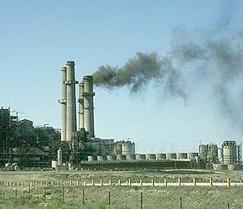|
The economic health of the $30 billion recreational fishing industry
- and the health of part time anglers - is at stake, according to PIRG's report.
The report finds that nine of the 19 states with mercury warnings covering all of their inland lakes or rivers are also among the top twenty states for expenditures on recreational fishing.
Five of the top ten states with the most lake acres under mercury advisory - Minnesota, Wisconsin, Florida, Michigan, and Texas - are also in the top ten for the amount of money spent towards recreational fishing. And two of the ten states with the largest number of river miles under advisory, Florida and Ohio, are also in the top ten for spending on fishing.
"We think the health advisories are responsible and that people should know about them," Michael Doebley, deputy director of governmental affairs for the Recreational Fishing Alliance, told ENS.
"Most recreational anglers are aware of those advisories and will choose what to eat and what not to eat accordingly," said Doebley, who does not believe the advisories present a serious economic risk to the recreational fishing industry in and of themselves, unless they are used to promote limiting anglers access to waters.
The federal government does not issue mercury health warnings, leaving states to tackle the issue. The primary health risk from the toxic metal emerges when airborne mercury falls into surface waters where it can accumulate in streams and oceans. Bacteria in the water transform mercury into methylmercury, which fish absorb when they eat aquatic organisms and humans absorb when they eat fish.
Scientists have shown that methylmercury can cause brain and nerve damage and studies indicate children and women of childbearing age are at a disproportionate risk.
The U.S. Environmental Protection Agency (EPA) says some eight percent of U.S. women childbearing age has unsafe levels of mercury in their bodies.
PIRG's report contains heavy criticism of the Bush administration's "Clear Skies" initiative, which it believes relaxes the existing law to cut mercury emissions.
Tightening emissions standards for coal-fired power plants is the key to reducing mercury emissions.
Coal-fired plants are the nation's largest source
of mercury emissions, spewing out some
50 tons of the toxic metal each year. Current
emissions of mercury add to the existing pool,
which is continuously mobilized, deposited on
land and water, and remobilized.
But coal-fired plants are exempt from clean air
standards - the other two large sources of
mercury, which are medical and municipal
waste incinerators, are tightly regulated and
emissions have been reduced by more than 90
percent since 1990.
|

